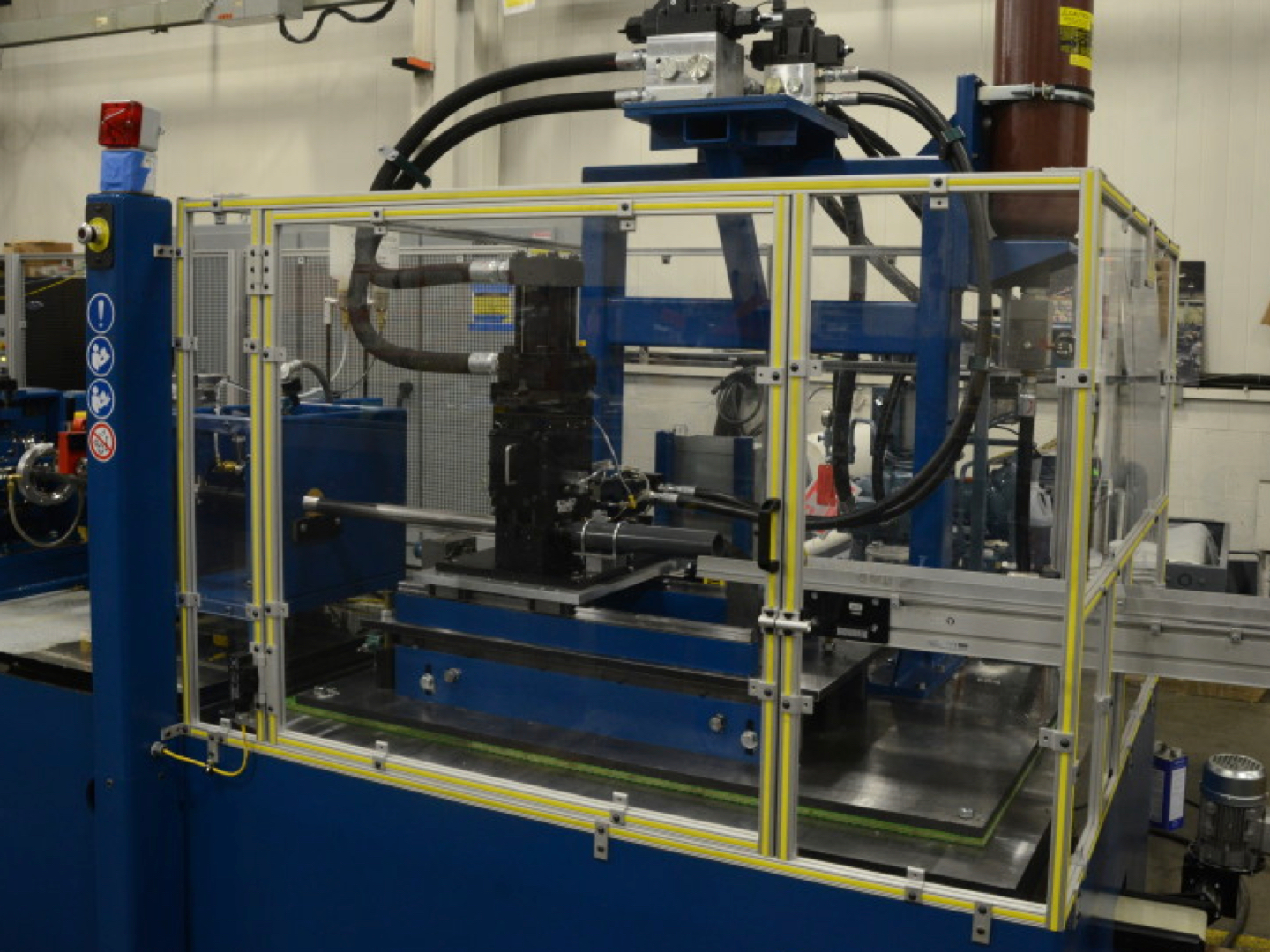In roll forming line design, flying dies are made to move in a linear fashion along tracks built into a mechanical, pneumatic, or hydraulic press, as opposed to being fixed to the ram and bolster as stationary prenotch dies are. However, bit more care and time must generally be put into the construction of a medium to high production flying prenotch die than is necessary to put into most of the stationary prenotch dies. In this post, we'll discuss some important design considerations you need to make when choosing a flying die, including the most common methods of measuring.
Types of Basic Flying Cut-Off Dies
Although there are many variations, there are really only two basic types of cut-off dies used. They are most commonly referred to as: (1) the punch cut or blade type die, and (2) the crop-off or slugless type die.
The decision of which type of die to use in each case is made by taking the following into consideration:
 The contour of the shape to be cut
The contour of the shape to be cut- The gauge of the material to be cut
- Maintenance involved in cutting certain materials
- The line speed to be achieved
- Available press stroke
- Matching prenotched areas
- Lengths of runs planned
Measuring with Flying Die Systems
There are two basic methods of measuring for flying die systems: mechanical pickup and electronic measuring.
Mechanical Pickup
The pickup finger is either mounted on the die or positively attached to the die by means of a pull-rod, and it drops into a hole or slot at a predetermined distance from a punch in the die. Sometimes the pickup finger is constantly spring loaded onto the material and automatically “finds” the opening to drop in to. Sometimes the pickup finger is held off the material by an air cylinder and is dropped in front of the correct opening to measure off of by a signal from a rotary encoder, photo cell or proximity switch.
The die is pulled forward by being positively latched into the material being pulled by the roll former. The pickup finger can be retracted either mechanically or by an air cylinder somewhere between the bottom of the press stroke and the top dead stop position of the press ram. I prefer the use of an air cylinder to retract the pickup finger because it allows flexibility in the timing of the pullout. This is sometimes critical with thin materials to eliminate hole distortion from the stripping of the punches.
Because the measuring is positive (latched into the material) any type of press can be used without concern for its effect on accuracy.
Electronic Measuring
The electronic flying prenotch measuring uses either photo cells and proximity switches or rotary encoders to fire the press.
Photo Cells/Proximity Switches
Photo cells and proximity switches are both used to “see” an edge of a previously punched opening in the material and fire the press to punch another opening, or pattern of openings, at a set distance apart based on the position of the photo cell or proximity switch from the die. The photo cells and proximity switches can also be used in conjunction with a simple predetermining counter, a PLC or a computer to count openings and fire the press after the correct number of counts.
Rotary Encoder
A rotary encoder measuring system is made of a spring-loaded or air loaded measuring wheel, a material backup wheel or plate, and rotary encoder that is connected to a electronic length controller, a predetermining counter, a PLC, or a computer to read the counts put out by the rotary encoder and to output a signal to fire the press after the correct amount of material has run under the measuring wheel.
These units should be used exclusively with air or hydraulic presses because of their ability to be very repetitive, thus making the whole system more accurate. However, as with any “open” read and fire system, the faster the line speed, the less accurate the lengths will tend to be.
The next step in rotary encoder measuring and also the next step in sophistication of all measuring systems, is the “closed loop” system. By using an electronic controller package, rotary encoders, and either a servo motor or a hydraulic servo valve and cylinder to accelerate the die, the system knows where the die is relative to the material at all times. The die is accelerated to match the material speed exactly and is positioned to cut the material to the correct length while the speeds are matched.
The closed loop system is usually very expensive. But when high speed and high accuracy is required, and sometimes when working with thin materials or using a mechanical press, it is worth it. The same type of “open” and “closed loop” rotary encoder systems are used in cutoff operations.



